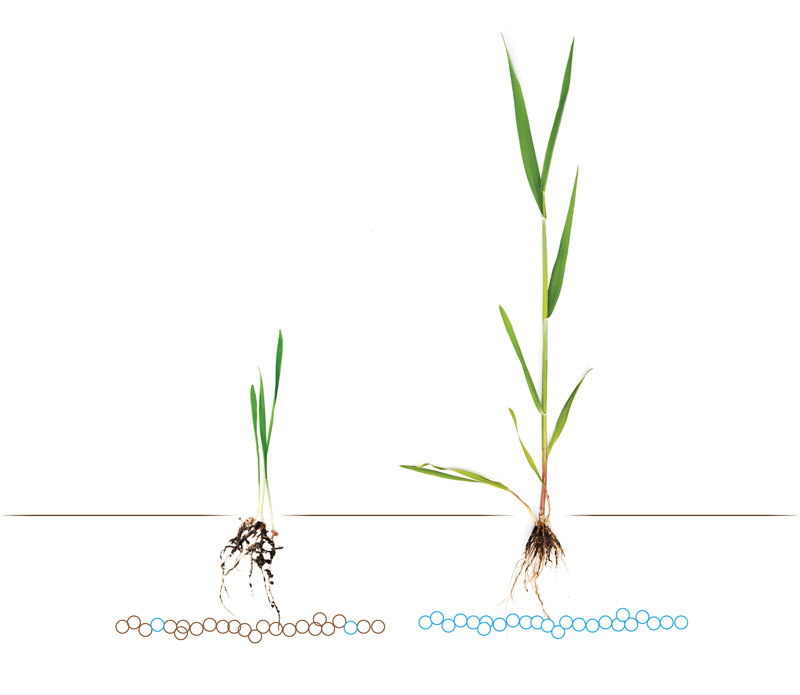Agronomy Services Manager, Zhensong Zhu, shares his expert advice on how using compound fertilisers could maximise your plant nutrient uptake
With high agricultural input prices, optimising crop nutrient uptake may result in a better economic return on your fertiliser investment. Poor distribution, when applying nutrients with low mobility, could cause uneven nutrient uptake across your crop resulting in a variation in quality.
Agronomy Services Manager, Zhensong Zhu, suggests that using a compound fertiliser can improve distribution and plant uptake when compared to using a blend. We asked Zhensong some key questions about compound fertilisers and the role they play in distribution.
What is compound fertiliser?
A fertiliser blend contains two or more products mixed to meet crop nutrient requirements. In contrast, a compound fertiliser contains several nutrients in each granule.
A blend of two or more products, such as zinc oxide and MAP, may contain the required ratio of nutrients for your crop however the individual nutrients are not present in every granule. This may result in inconsistent nutrient distribution across the crop and therefore inconsistent plant uptake resulting in a variation in quality across the crop.
In contrast, a compound granule, such as Impact Fertilisers' ZINCSTAR®, is created by adding zinc to MAP during the granulation process. This means that both MAP and zinc are present in every ZINCSTAR® granule resulting in even nutrient distribution and plant uptake reducing potential variation in crop quality.

What are the key advantages of using a compound fertiliser?
When applying a nutrient, such as zinc, with relatively low mobility in the soil distribution is everything.
Due to zinc’s immobility, there is a critical need to ensure zinc is placed at the seed at sowing to ensure optimum uptake by crop roots. Therefore, using a compound granule that contains zinc in every granule may have a much more even distribution rate than if a blend was applied.
On average there are only 3 granules of zinc every 1-metre row when using a MAP + 1%Zn dry blend whereas we have 180 granules of zinc per metre row when using ZINCSTAR®.
As shown above, using compound fertilisers can increase the even distribution of zinc and minimises the risk of zinc deficiency by ensuring plant access.
To find out more about Impact Fertilisers ZINCSTAR® click here
Price, G.H. (2006) Australian Soil Fertility Manual. Melbourne, VIC: CSIRO Publishing.
